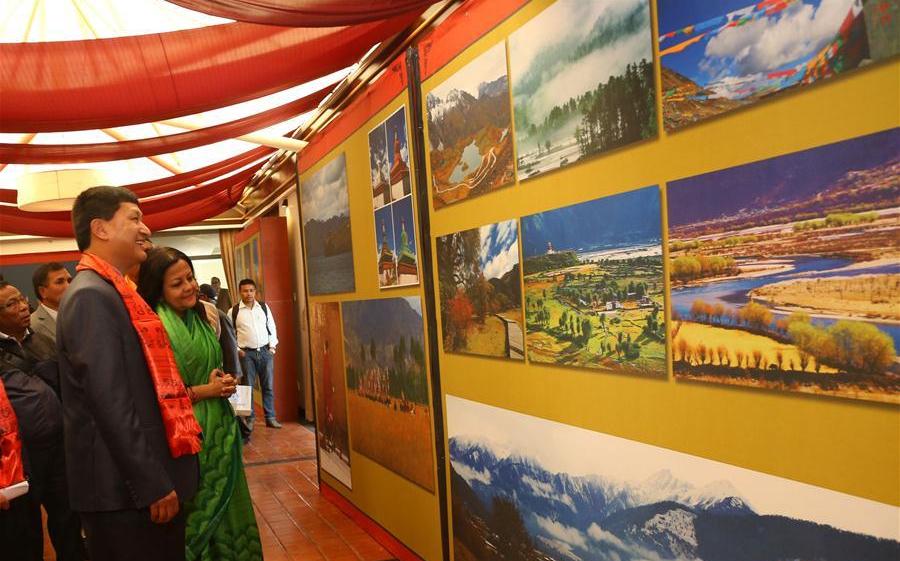Changes to medium in Tibet
Dzeyu is a native Tibetan journalist with a doctorate in journalism. Every year she leaves the college and heads to study in the rural and pastoral areas. She said that Tibet is no longer a place cut off from the world by high mountains and deep valleys. With modern media covering Tibet, a place where social and economic development are full of vitality is being accessed to the world through the most convenient method.
Her research sites include Jangdam Township and Gyatsoshung Township in Shigatse, southwest China's Tibet autonomous region, which are only 20-30 kilometers apart, but transport is inconvenient due to the high overlapping mountains. As a result, different ways of contacting the outside world and ways of obtaining information have led to significant differences to their lives and economic development in the area.
Dzeyu believes,"there is a marked difference between the media exposure of villagers and their perception of information in wealthier villages in Tibet, compared to the various villages that are yet to find wealth. Abundant information will continuously supplement the villagers' lack of knowledge, thus pushing them to continuously develop new paths to richness".
Newspapers, radio, television and other media arrived later in Tibet than other developed regions, but Internet arrived at the same time as other provinces. In the 1990s, Lhasa's Barkor was the area with the most internet cafes. Later, with the development of internet technology, it became more commonplace to have Internet in people's home in Tibet.
In 2013 there were nearly 1.76 million Internet users in Tibet and Internet penetration reached 58.6%. In recent years, with the rise in popularity of smartphones, Tibetan people's media world has taken on a new appearance as the average farmer and herdsman prefers to use Wechat (a popular instant messaging app in China) to communicate, and send all kinds of beautiful pictures and sentiments in their friend group chats.
During her research, Dzewu came to know Kelsang, a herdsman with low literacy and unable to use a computer. He likes to sing and occasionally asks others to help him download the most popular songs on to his phone, which is the best memory and player of those songs.
"Internet + e-commerce" has become a daily routine for many Tibetans. According to a report issued in early 2017 by Alipay (a leading third-party mobile and online payment platform in China), in 2016, 90.3% of bills in Tibet were paid through this platform, which ranked first in the country, and in terms of the share of order online by mobile Internet devices, Tibet is above the national average level.
According to statistics from the autonomous region's communications authority, as of the end of 2016 mobile signal coverage in the region's administrative villages has reached 100%. And E-commerce has also become a way for people in Tibet to communicate with the world.
Editor: Tommy Tan.
Your Comment
Name E-mailRelated News
-
;
-
-

-
Tibetan students win first prize at science video festival
Three Tibetan junior high school students won the first prize at the 8th China Adolescents Science Video Festival.
-
-
-

-
Highways improve transportation in SW China's Tibet
Highways have been built to improve transportation in southwest China's Tibet.
-
-
-

-
Int'l Digital Art Exhibition on Tibetan Cultural Heritage held in
International Digital Art Exhibition on Tibetan Cultural Heritage began in Kathmandu, capital of Nepal, on Nov. 10, 2017.
-
Based in Lhasa, Tibet Vista is a Tibet travel agency that specialized in Tibet permit, and Tibet tours for both private and group travelers at a local price!
•4 Days Lhasa City Group Tour from USD 460 •8 Days Everest Base Camp Group Tour from USD 850 •15 Days Mt.Kailash Group Tour from USD 1780 •2016 Tibet Train Tours from Beijing, Shanghai, Chengdu, Xining,etc










